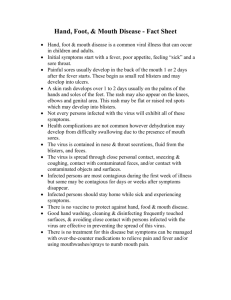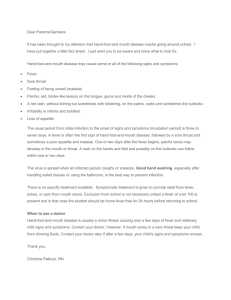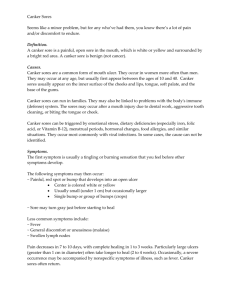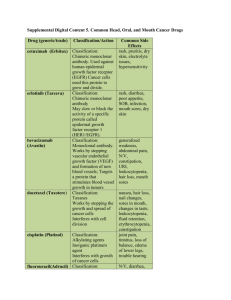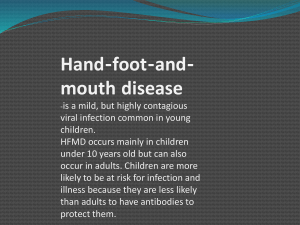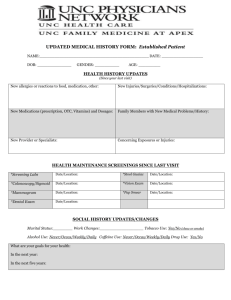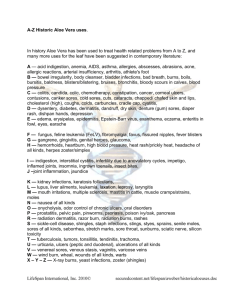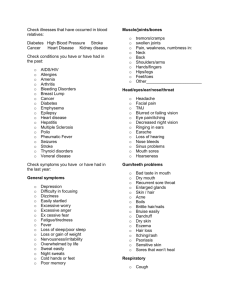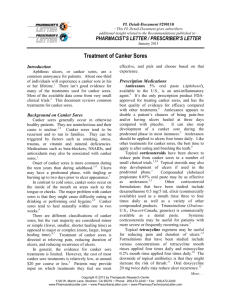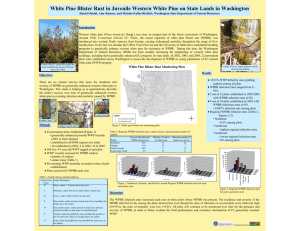Canker Sores - DrConcannon.com
advertisement
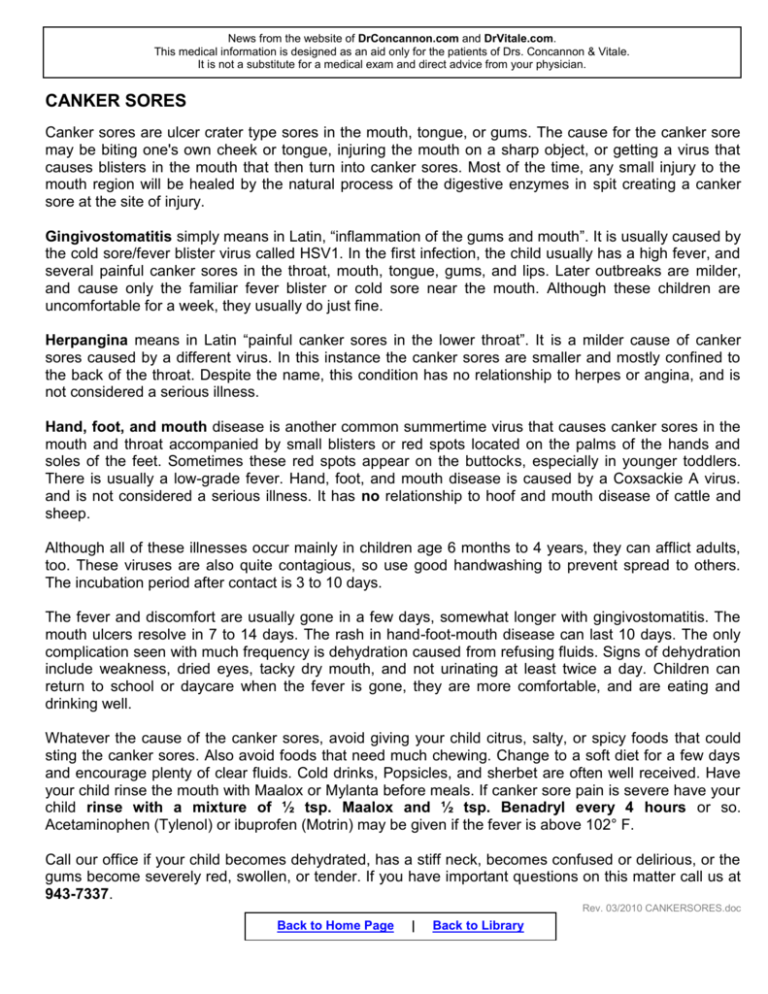
News from the website of DrConcannon.com and DrVitale.com. This medical information is designed as an aid only for the patients of Drs. Concannon & Vitale. It is not a substitute for a medical exam and direct advice from your physician. CANKER SORES Canker sores are ulcer crater type sores in the mouth, tongue, or gums. The cause for the canker sore may be biting one's own cheek or tongue, injuring the mouth on a sharp object, or getting a virus that causes blisters in the mouth that then turn into canker sores. Most of the time, any small injury to the mouth region will be healed by the natural process of the digestive enzymes in spit creating a canker sore at the site of injury. Gingivostomatitis simply means in Latin, “inflammation of the gums and mouth”. It is usually caused by the cold sore/fever blister virus called HSV1. In the first infection, the child usually has a high fever, and several painful canker sores in the throat, mouth, tongue, gums, and lips. Later outbreaks are milder, and cause only the familiar fever blister or cold sore near the mouth. Although these children are uncomfortable for a week, they usually do just fine. Herpangina means in Latin “painful canker sores in the lower throat”. It is a milder cause of canker sores caused by a different virus. In this instance the canker sores are smaller and mostly confined to the back of the throat. Despite the name, this condition has no relationship to herpes or angina, and is not considered a serious illness. Hand, foot, and mouth disease is another common summertime virus that causes canker sores in the mouth and throat accompanied by small blisters or red spots located on the palms of the hands and soles of the feet. Sometimes these red spots appear on the buttocks, especially in younger toddlers. There is usually a low-grade fever. Hand, foot, and mouth disease is caused by a Coxsackie A virus. and is not considered a serious illness. It has no relationship to hoof and mouth disease of cattle and sheep. Although all of these illnesses occur mainly in children age 6 months to 4 years, they can afflict adults, too. These viruses are also quite contagious, so use good handwashing to prevent spread to others. The incubation period after contact is 3 to 10 days. The fever and discomfort are usually gone in a few days, somewhat longer with gingivostomatitis. The mouth ulcers resolve in 7 to 14 days. The rash in hand-foot-mouth disease can last 10 days. The only complication seen with much frequency is dehydration caused from refusing fluids. Signs of dehydration include weakness, dried eyes, tacky dry mouth, and not urinating at least twice a day. Children can return to school or daycare when the fever is gone, they are more comfortable, and are eating and drinking well. Whatever the cause of the canker sores, avoid giving your child citrus, salty, or spicy foods that could sting the canker sores. Also avoid foods that need much chewing. Change to a soft diet for a few days and encourage plenty of clear fluids. Cold drinks, Popsicles, and sherbet are often well received. Have your child rinse the mouth with Maalox or Mylanta before meals. If canker sore pain is severe have your child rinse with a mixture of ½ tsp. Maalox and ½ tsp. Benadryl every 4 hours or so. Acetaminophen (Tylenol) or ibuprofen (Motrin) may be given if the fever is above 102° F. Call our office if your child becomes dehydrated, has a stiff neck, becomes confused or delirious, or the gums become severely red, swollen, or tender. If you have important questions on this matter call us at 943-7337. Rev. 03/2010 CANKERSORES.doc Back to Home Page | Back to Library
